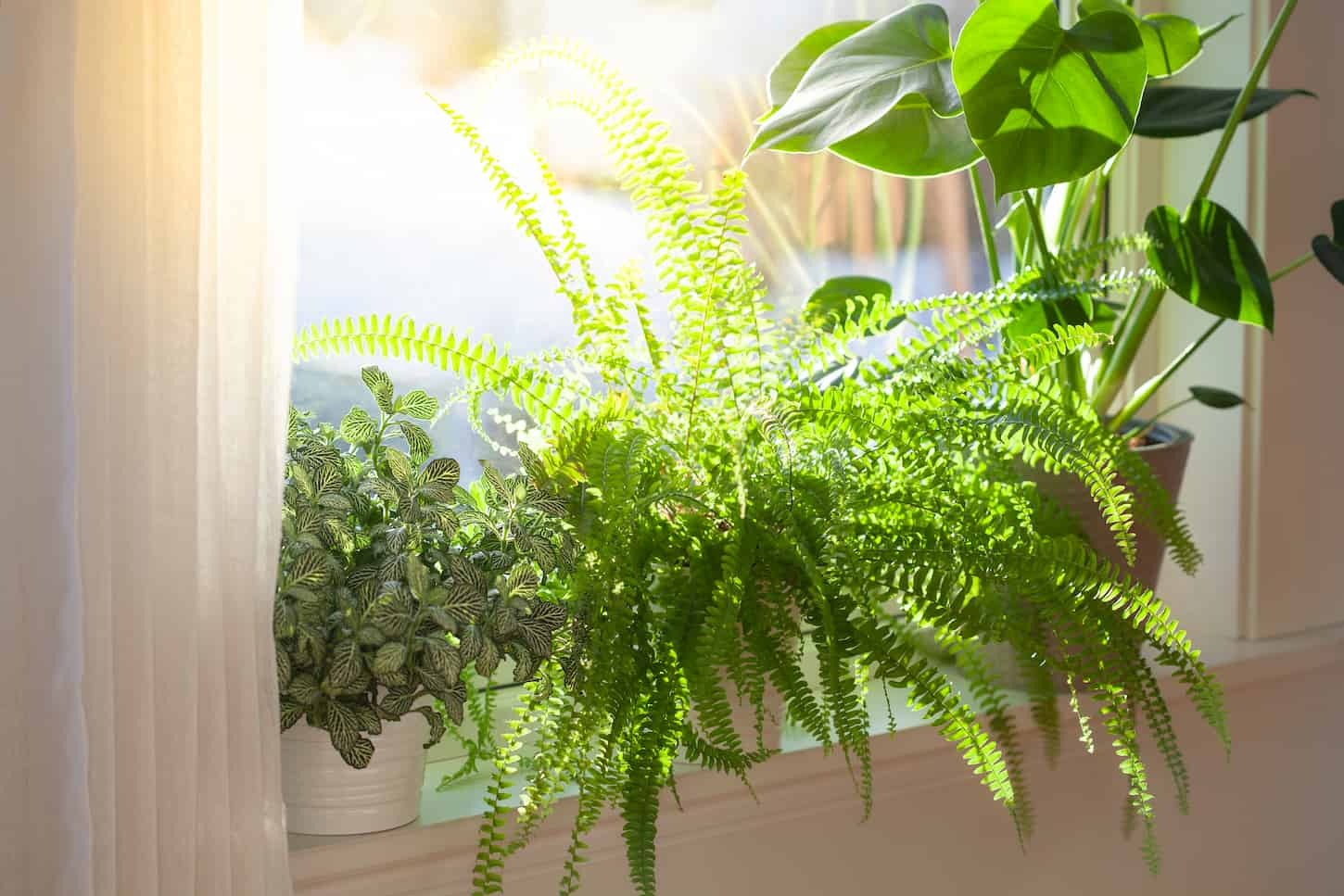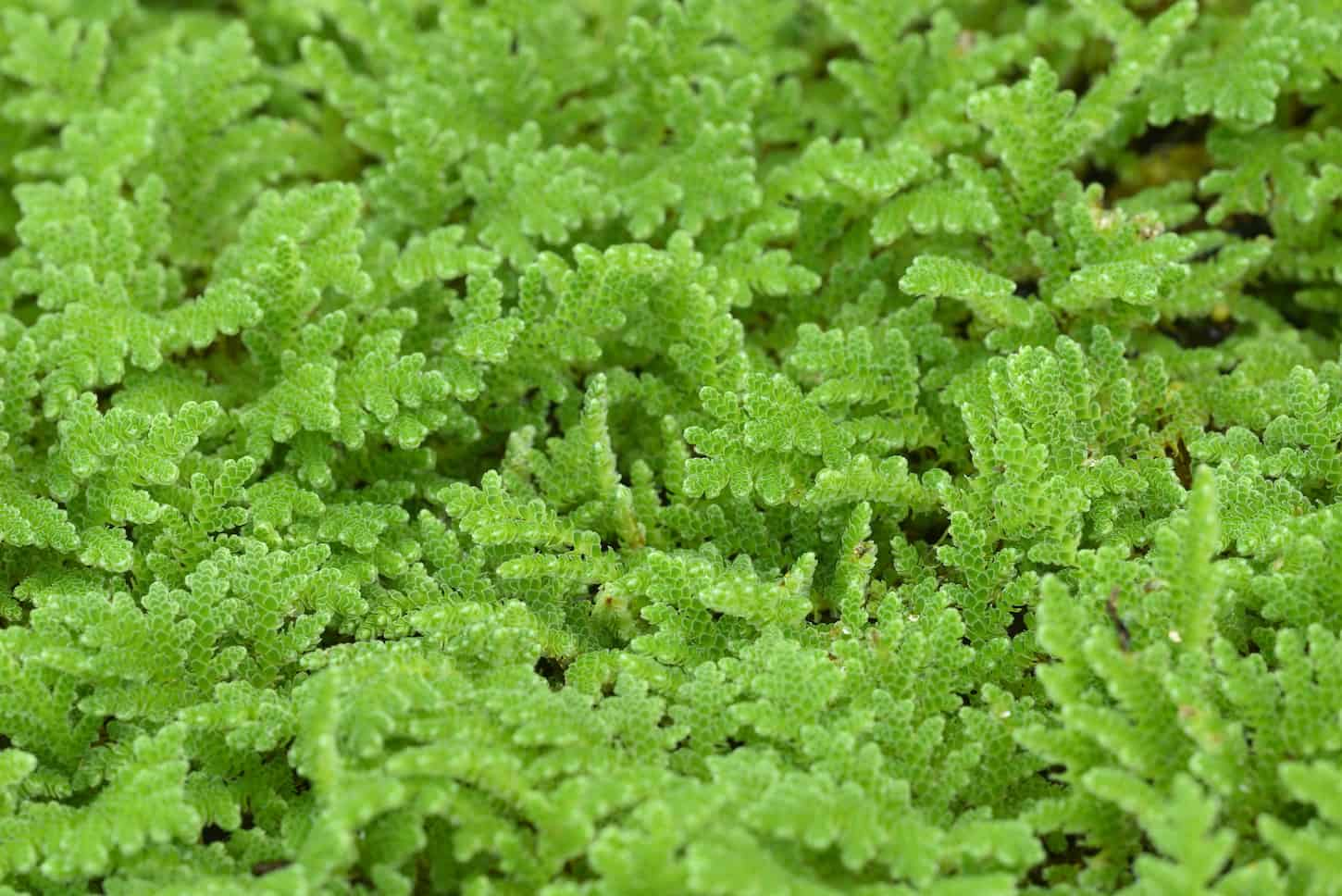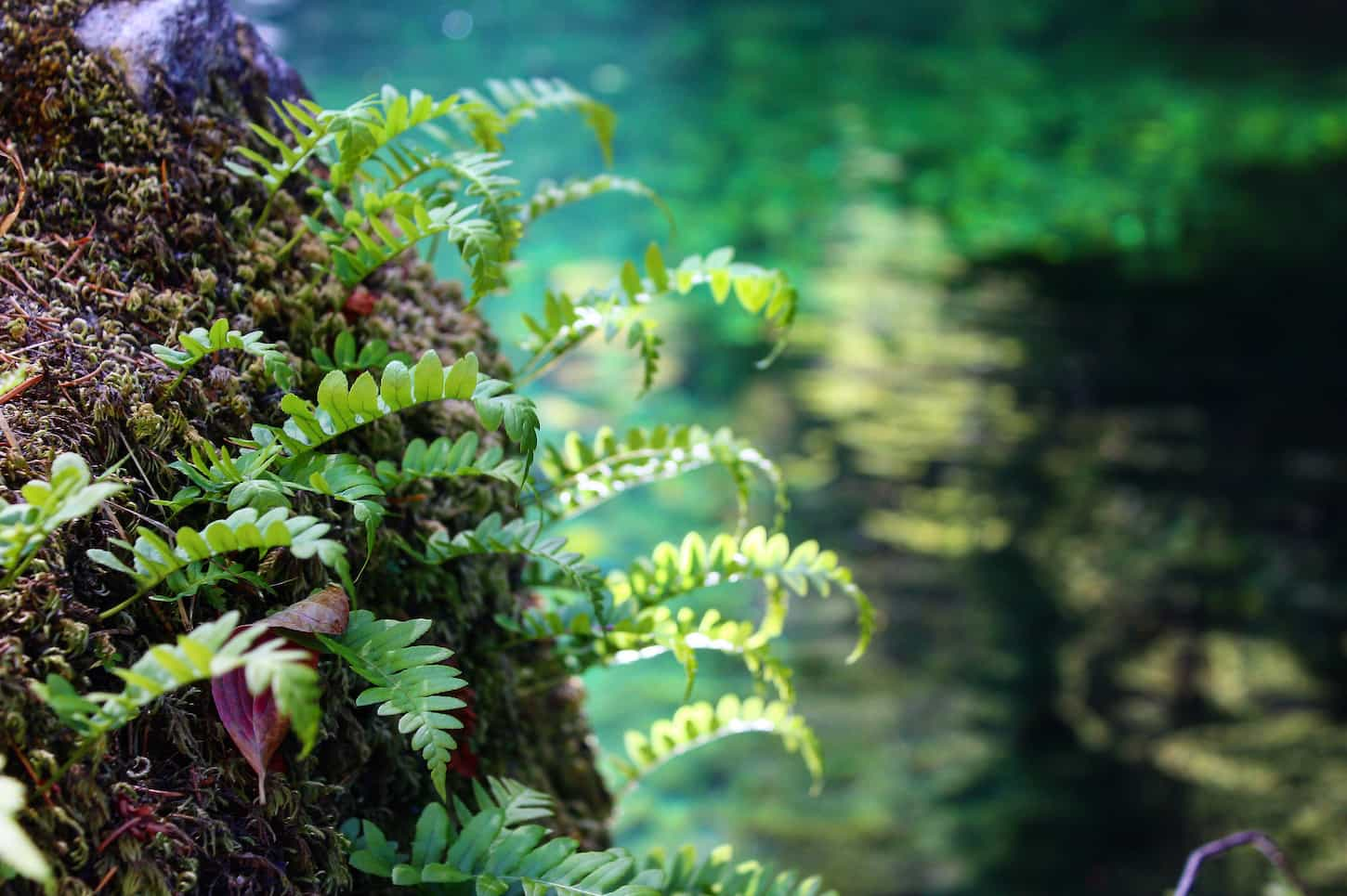Considered one of the more ‘ancient’ divisions of plants out there (some going back to 358 million years ago), ferns have a strong survival instinct. But can you grow ferns in water only?
Ferns can grow in water only, without soil. This is known as hydroculture (or hydroponics) and is the ideal way to grow many ferns. Despite their hardy nature, ferns can be tricky to care for. They’re often thirsty and require specific humidity levels to thrive.
Ready to read more about growing your ferns without water? Let’s do this: keep reading for everything I’ve learned!

Can Ferns Grow Without Soil?
Ferns can grow without soil if they are grown in water with an aggregate (either pebble, rock, or clay) and given hydroculture fertilizers. Due to the many requirements, ferns need for them to live, growing them in water is the best way.
This is also known as hydroculture – a method of growing plants without the use of soil. By growing them directly in water, you won’t have to constantly water them like soil-potted plants.
If your ferns are getting proper sunlight and nutrients, they can survive in the water for a long time. Ferns can grow fully submerged in the water, or they can also grow with their leaves above the surface of the water.
But let’s get real for a moment – most people are going to grow their ferns in water with the leaves above the water surface with a pebble aggregate holding the roots in place.
You may even want some sort of cover (that lets the fern out, but works as a cover over the hydroponics aggregate and roots) to reduce the risk of the fern getting dumped out and water going everywhere.

Can You Root Fern Cuttings in Water?
Fern cuttings can easily be put in water to grow. Make sure that you remove the plant gently out of its pot or container, careful not to pull the roots too hard. Once removed, run the plant under running water to remove any remaining soil before potting the fern in water only.
When it comes to choosing its new container, the best one for your fern depends on how you want to grow it.
If you want the fern completely submerged in water, a clear container is best. However, if you want the leaves to remain out of the water, any hydroculture (or hydroponics) pot will work.
Does that mean you have to go out and buy a brand-name pot? No. With some work, most plant pots can be turned into hydroponic pots.
In any case, here’s how you proceed, based on which type of container you have.
- For submerged leaves, fill your clear container with gravel to cover the roots. Leave the stems and leaves uncovered and fill the container with water to immerse the fern.
- For exposed leaves, place your fern inside the hydroculture pot and cover the root with gravel or clay aggregates. Water will remain at the bottom of the pot and you can monitor water levels using an indicator that’s planted in the pot.
Some hydroculture-specific pots already come with a cover to let the leaves out, but help contain the water in case the pot gets hit by accident.

How to Properly Care for Ferns
Generally, ferns require the same thing, regardless of where they grow. For instance, all ferns grow their best in bright, indirect light, but they can also do well in low light conditions. However, they can’t handle direct sunlight.
With temperature, ferns like being in humidity levels of around 50 to 70 percent. In terms of humidity, the more the better, as they enjoy tropical weather. For optimum humidity conditions, it could be worth fitting in a pebble tray underneath the plant or a humidifier nearby.
While most ferns have the same requirements, there are certain needs that are exclusive to water-only ferns and submerged ferns.
Water-only fern care
There are two major steps you need to take with water-only ferns.
- Ensure the water level is right.
- Use hydroponics fertilizer.
Let’s go into more detail on those, so you know why they’re important.
Ensure the water level is in an optimum range. Having a water meter makes it effortlessly easy to check how much water is at the bottom of the pot. The gauge prevents you from overwatering and can also let you know if it’s thirsty.
Use hydroculture fertilizer. Different plants like different fertilizers and ferns enjoy hydroculture food. This fertilizer contains micro and macronutrients that help ferns grow. It can also be given to ferns every 3 months in little amounts during summer and winter.
Submerged fern care
Submerged ferns make me think of kelp forests and other underwater plants. However, submerged ferns don’t want seawater. Instead, here are the two things you need to know about them.
- Replace the water regularly.
- Keep the container clean.
Replace the water often. To prevent algae build-up, it’s best to refresh the water once a week. When the water gives off a green tint, it’s time to change the water.
Clean the container. In addition to algae, mold can also grow in a fern container. To avoid this, wash it every 3 to 4 months. Make sure to pull the fern gently out of the container when you need to clean it.

How Do Boston Ferns Propagate in Water?
Boston ferns are non-flowering plants that propagate by creating spores that require water to grow. The spores contain all the aspects needed to grow a new plant when properly watered.
To propagate a Boston Fern in water, turn the temperature down by about 10 degrees at night. Next, get a tray full of pebbles to place under the fern’s pot and pour some water on top. Then, watch the fern grow as the water evaporates and is absorbed by the fern.
As Boston ferns are non-flowering plants, they don’t produce seeds. This means that they will propagate using spores instead. Luckily, they don’t have anything else to propagate, as each spore contains both male and female parts that are needed to grow a new plant.

Pros for Growing Ferns in Water Only
Wondering if it’s worth it to go water-only? Here are some of the pros to going water-only with your ferns.
- Healthier roots. By using pebble, gravel, or hydroponic clay aggregates instead of normal soil, the ferns’ roots will receive a continuous supply of oxygen. This is because aggregates can hold a good amount of air in them and provide healthy air circulation.
- Keeps pests at bay. Pests rarely go for plants that live in water, so the water serves as a natural pest control barrier.
- Reduced under and overwatering issues. When ferns are grown in soil, it can be difficult to balance the water levels. But when they’re already living in water, there’s no need to worry about most watering issues. Considering that the plant is surrounded by water, it also eliminates the need of filling pebble trays and setting up humidifiers.
Cons for Growing Ferns (in water or at all)
That being said, if you’ve got a cat who likes to terrify plants or children who like to dump the plants out, then maybe growing a fern shouldn’t be on your to-do list just yet.
Current status at our house: the cat likes to terrorize indoor plants. So even though our kids are likely past the dumping plants out stage (there’s still some wall coloring, so maybe not?), the cat’s got us hesitant about any plants just yet.
More Fun Facts about Ferns
Ferns are also scientifically known as Pteridophytes. The largest species of ferns can reach 6 meters in length.
- Ferns are also considered epiphytes, meaning that they often grow on other plant species.
- Ferns rely on water that comes from the humid air or from rainfall coming down on tree trunks. However, there are exclusively aquatic ferns, too.
Some fern varieties are poisonous to animals and livestock. Know which varieties you’re keeping and if they’re safe for your animals to nibble. If not, keep the animals and ferns away from each other.
Caring for ferns is a challenge for those new to the gardening game, but it could be one worth taking on. If you’re up for the task, keep reading for tips on how to make your fern plant live a long and happy life.

Next Steps
Based on the above findings, it seems that ferns thrive when grown in water. They’re perfectly capable of growing without soil due to their aquatic nature.
While they can still grow in soil, there are clearly many benefits to having them grow in water. This includes having healthier roots and preventing overwatering issues. Just remember that they also need other things like adequate sunlight and humidity levels.
And remember, too, that many fern varieties can be poisonous to livestock and animals. So if you’re going to keep your fern outdoors, or if you’ve got indoor pets, make sure you check the compatibility between the animal and the fern. You don’t want to keep an animal near a plant that could poison them.
In any case, if you need another reason why growing ferns in water is a good idea, think of it this way: you won’t have to read this article I wrote or worry about soil water absorption ever again. But even if you do go hydroponics with your fern, that article really is worth reading. You’ll learn some cool ways to keep your garden soil water levels at optimum levels better and easier. Go give it a read next.
Resources
Learning from your own experience is essential, but learning from others is also intelligent. These are the sources used in this article and our research to be more informed as homesteaders.
- “Fern.” Britannica, https://www.britannica.com/plant/fern.
- “Western Brackenfern.” Utah State University Extension, extension.usu.edu/rangeplants/forbsherbaceous/western-brackenfern. Accessed 30 Dec. 2021.
